In the second installment of Tilson’s blog series, “Are You Shovel-Ready?”, Tilson’s VP of Strategy & Business Development, Andy Spurgeon, shares his experiences from NTIA’s Broadband Technology Opportunities Program – which funded more than $3B in broadband programs. Andy leverages his experience at NTIA to outline the key steps for planning a broadband program that will put your application on the fast track to funding.
To learn more about Tilson’s comprehensive broadband deployment services, click here or contact us to discuss your specific broadband deployment goals.
//
A wave of broadband infrastructure funding is expected in 2021 and access to that funding will be competitive. Evaluators will consider how your project adheres to program requirements, if it has a solid financial plan and schedule, how risky it may be, and whether it delivers sufficient benefit to the target beneficiaries established for the program. By considering these topics in advance, you can design a project that will both win funding and succeed during implementation.
In our last article, my colleague Adam Quinlan discusses the critical questions that must be considered when assessing public funding opportunities for broadband infrastructure:
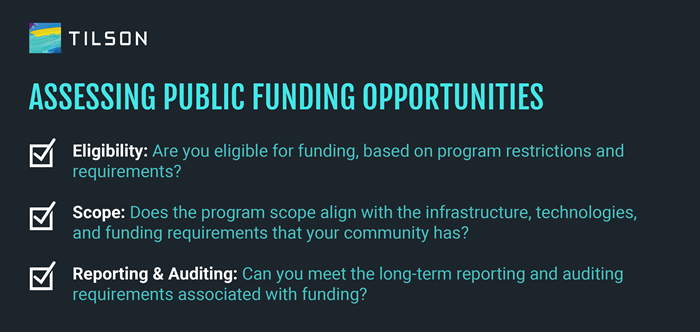
If you have completed this initial evaluation and determined that the program is a fit, the next step is to develop program that meets those requirements and can succeed at the level of funding available.
Using public funding for network deployment poses some unique challenges; many state and federal broadband infrastructure programs limit the use of funds to capital expenditures during the period of the award. Some permit the use of funding for eligible operating expenditures incurred during the period of performance of the award. Almost no programs provide ongoing funds to subsidize operations once the grant period ends! This means that it is essential to account for ongoing operating costs and working capital requirements.
At Tilson, we define a successful broadband project as:
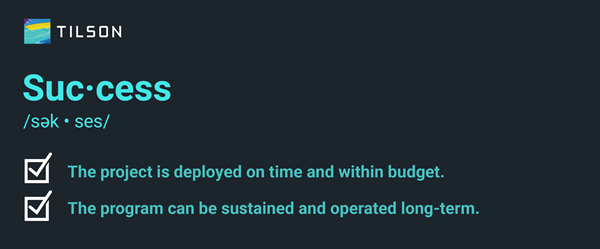
During my tenure with the federal government, my colleagues and I frequently met with local and regional stakeholders to discuss the benefits of broadband and how to initiate programs. These audiences included economic development, local business groups, and political stakeholders with an interest in advancing broadband availability among their constituencies. One of the biggest stumbling blocks among stakeholders was a misunderstanding of three critical truths of telecommunications and broadband:
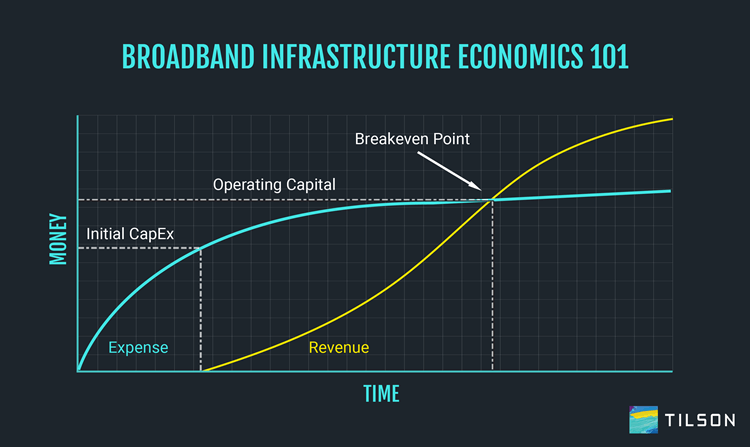
During my time at the National Telecommunications & Information Administration, we assessed the risk of grant applications as part of our due diligence process. We evaluated each project by considering four fundamental project factors that could expose the agency to financial, operational, legal, and reputational risk if a grant awardee could not perform as expected:
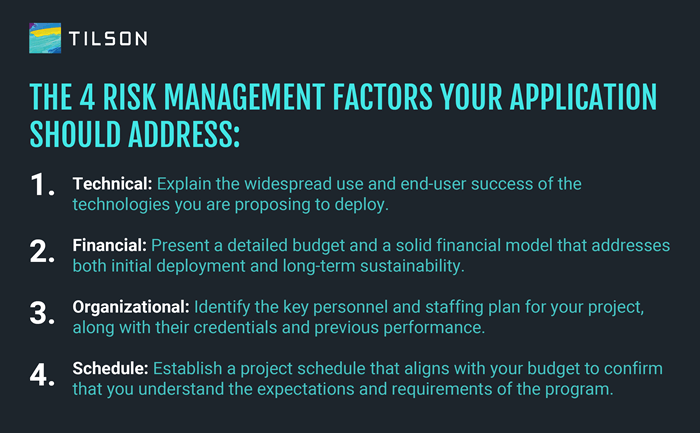
When developing a project, you can strengthen your application by considering these factors and proactively addressing them in your application through a risk matrix or other artifact.
Understanding and addressing the targeted impact of the grant program is essential. Make sure to address the question, Does your program deliver sufficient benefit to the target beneficiaries? A popular business phrase when delivering a sales-pitch is ‘know your audience,’ and approaching public infrastructure funding is no different. A program that acutely addresses the target audience and motivation behind the subsidy has a greater chance of being funded than even the most well-planned program that fails to emphasize the target beneficiaries.
Three key considerations should be top-of-mind when developing your program and approaching public funding:
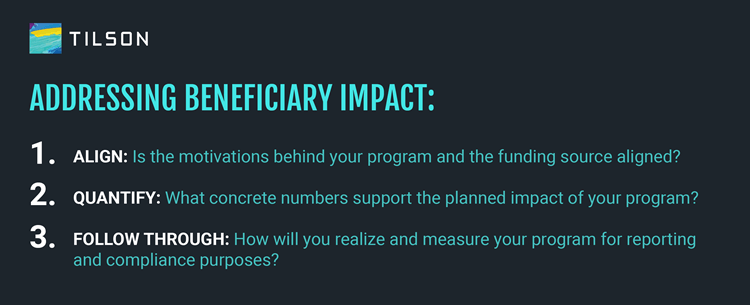
Most applicants approach a grant with some understanding of the problem they are trying to solve. More than likely, you will already have a sense of project scale, funding requirements, beneficiaries, and other details. Having a strong sense of what you want to accomplish is both a strength and a weakness. On one hand, you are not starting from scratch and have likely evaluated current levels of access and adoption, captured information on market demand, and developed a sketch – if not a high-level design – of the infrastructure required to address the problem.
On the other hand, this knowledge can become a hindrance if you fail to adapt your understanding to the program and available funding. You will almost always need to scale the project down or make changes to meet program requirements and work within available levels of funding. You must be flexible and not dogmatic in your pursuit of funding! This applies to service levels, technology, scale, and the number of beneficiaries. Do not let the perfect be the enemy of the good.
The United States is entering an unprecedented period of public investment in broadband infrastructure. Substantial funding will become available beginning in 2021 and competition will be fierce. Developing a program design that is supported by reliable data and aligns with program goals will assure evaluators that your program can and will be successful, if awarded.
Remember that evaluators will consider how your project adheres to program requirements, if it has a solid financial plan and schedule, how risky it may be, and whether it delivers sufficient benefit to the targets established for the program. Being proactive in early-stage planning efforts will address these considerations and increase your opportunity to procure funding, laying the groundwork for a successful infrastructure program in your community.
Tilson designs, builds, and maintains sustainable and cost-effective broadband networks that are essential to the health, safety, and quality of life in the modern community. Learn more about our comprehensive broadband deployment services or or contact us to discuss your specific broadband goals.

Andy Spurgeon is responsible for Tilson’s revenue generation strategy and business development activities. Previously, Andy served as Chief of Operations for broadband programs at the National Telecommunications & Information Administration (NTIA), with responsibilities spanning grant evaluation and oversight, data analytics, broadband technical assistance, and the implementation of the National Broadband Availability Map (NBAM).